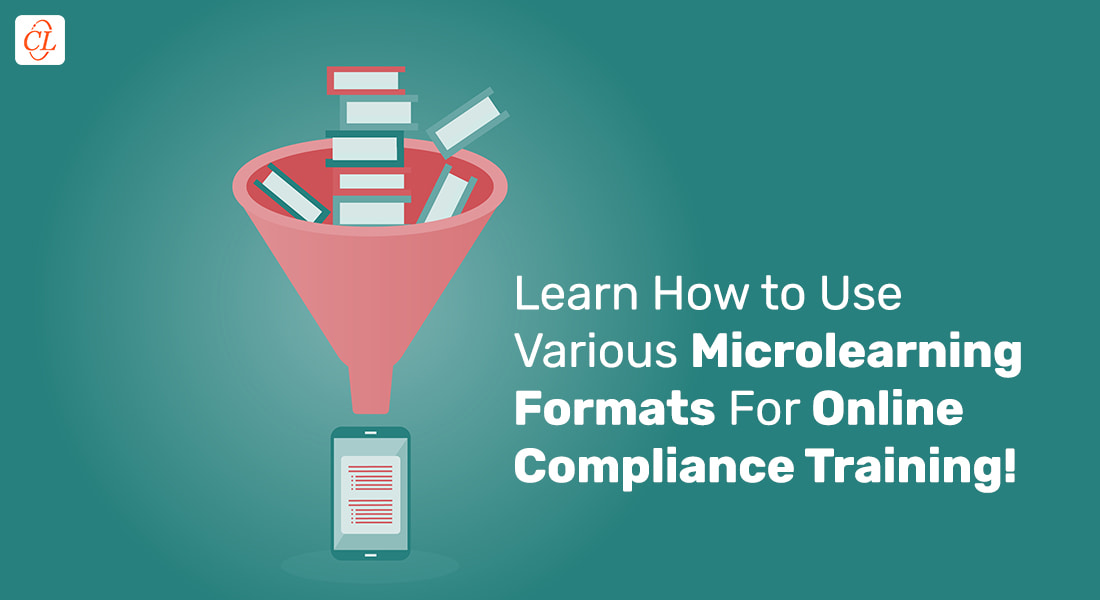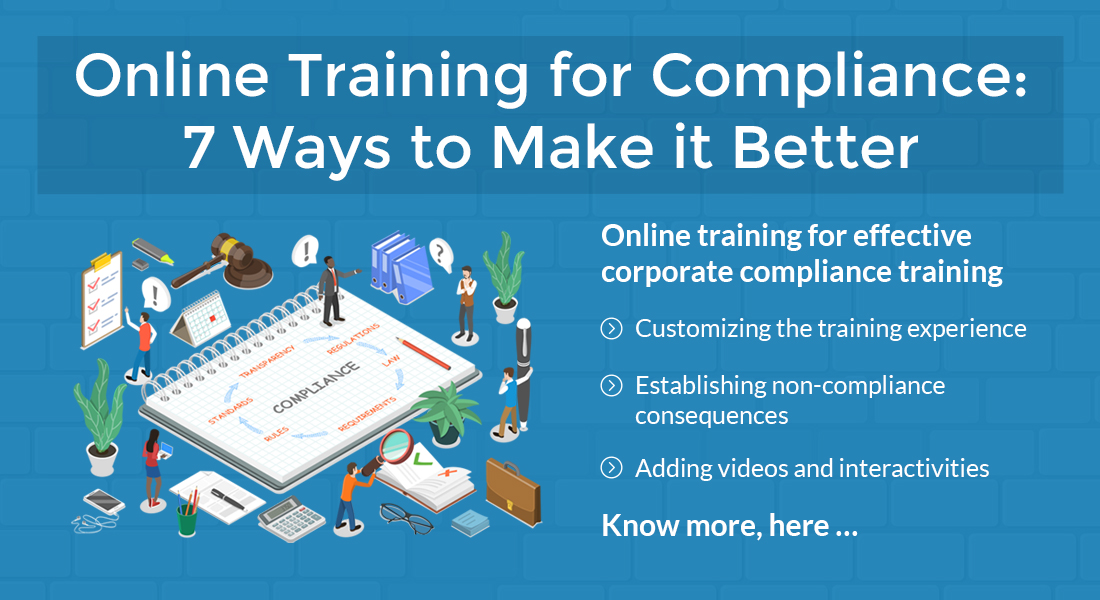5 Must-Have Microlearning Formats for Online Compliance Training

Microlearning is all the rage in the L&D world, and for good reason. It is the way to go if you want to create a self-contained, tailored learning experience. Videos are undeniably useful as a microlearning medium, but your online training doesn’t have to be limited to them. Other microlearning formats exist to guarantee that learners may receive compliance training anywhere, at any time.
There are several microlearning formats to build compelling compliance training with immersive learning methodologies and augment the basic compliance training with extra measures to keep learners engaged. Microlearning-based strategies are increasingly being employed to improve the effectiveness of compliance training.
In this blog, let us look at how you may employ different microlearning formats to guarantee that learners can receive compliance training wherever they are, at any time, whether as a supplement to compliance training or even as a refresher.
What Are the Various Microlearning Formats That May Be Used in Compliance Training?
5 Microlearning Formats That Can Aid in Online Compliance Training:
- Scenarios
- Simulations
- Infographics
- Whiteboard animations
- Flash Cards
5 Microlearning Formats for Compliance Training That Could Be Game-Changing
1. Scenarios
Most businesses require employees to complete training in ethics and standards of conduct. It is sometimes stated that training does not adequately equip people to make judgments when confronted with identical scenarios in the real world. There is a clear need to assist employees in developing decision-making skills.
If you want employees to be able to recognize situations that provide a conflict of interest, for instance, you could design a microlearning module containing a few scenarios to aid learners in detecting situations with potential conflicts of interest and making the best decision possible.
While this is only one instance, there are many other situations when employees must make judgments based on the workplace’s code of conduct regulations. Therefore, microlearning is effective in assisting learners in making the best decisions in various situations.
2. Simulations
Employees must adhere to a variety of processes when executing a task. These guidelines are in place to ensure the safety of your employees and customers, as well as to expedite work operations.
Employees may explore the procedures and abilities needed in a threat-free environment while still getting a feel of the implications of their actions through online training simulations. Consider the scenario of missing a step, which results in a work-related accident. They will be able to enhance their performance and close compliance knowledge gaps, preventing them from making the same mistakes.
To obtain answers to all of your microlearning concerns, download this webinar recording.
3. Infographics
Every workplace guideline, from dress code to anti-harassment policies to COI processes, can be tough to remember. With an infographic, though, everything gets much easier.
The main ideas of an infographic are conveyed through text and visuals. You can build a distinct infographic for each category if there are too many things to cover. You may create an infographic for each of your company’s rules, such as anti-discrimination, grievance management, social media usage, and termination procedures, to mention a few.
Before formal compliance training is handed out to staff, you might also employ infographics as a microlearning module in pre-training.
4. Whiteboard Animations
Whiteboard animation is a narrative method that uses real-life situations and examples to communicate a story. Storytelling is a powerful method for compliance training that works effectively. But, in a bite-sized module, is it conceivable to integrate a narrative in the form of a whiteboard animation?
Yes! To capture learners’ attention, you can use mini stories that can be shown as whiteboard animation. For example, if you’re teaching learners about ethics, you might use a whiteboard animation that depicts a character in a position where he or she is faced with a moral dilemma. Give them context for the circumstance and demonstrate how the character comes to the correct option. This can help learners apply what they’ve learned in the classroom when they’re in a comparable circumstance at work.
5. Flash Cards
Flash cards aid in the reversal of the forgetting curve. It is critical to exercise your memory during the learning process to enhance active recall. To reverse the forgetting curve, you can use flash cards as a microlearning format. Here are some suggestions for how to include flash cards into a compliance training program:
- Display facts about a law or policy and ask learners to estimate whether the statement is accurate or untrue.
- Provide learners with an acronym that was used in the compliance training and ask them to recollect the extended version.
- The learner can ponder the answer before flipping the card to disclose it.
Parting Thoughts!
These microlearning tools are easy to remember and comprehend. They reinforce critical compliance information to help you avoid work-related accidents. Microlearning formats also make it easier for your L&D team to stay up with regulatory changes by revising compliance training content on a regular basis.
Consider where microlearning can fit into your training approach before, during, or after training, and you should be able to use it to deliver successful compliance training. Download our free eBook ” Where Does Microlearning Fit in Your Training Approach?” if you’d like to learn more about implementing microlearning into your training strategy.





